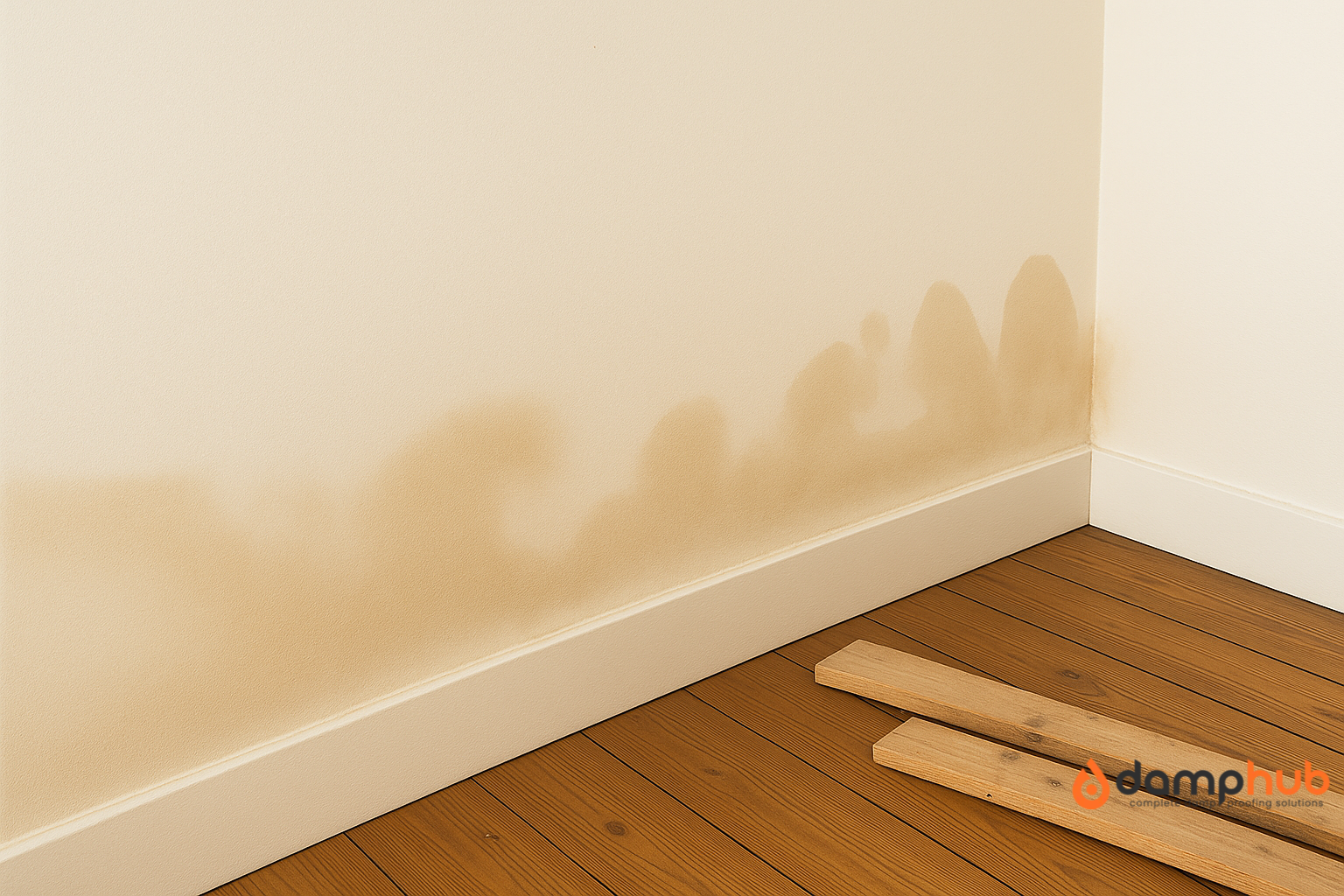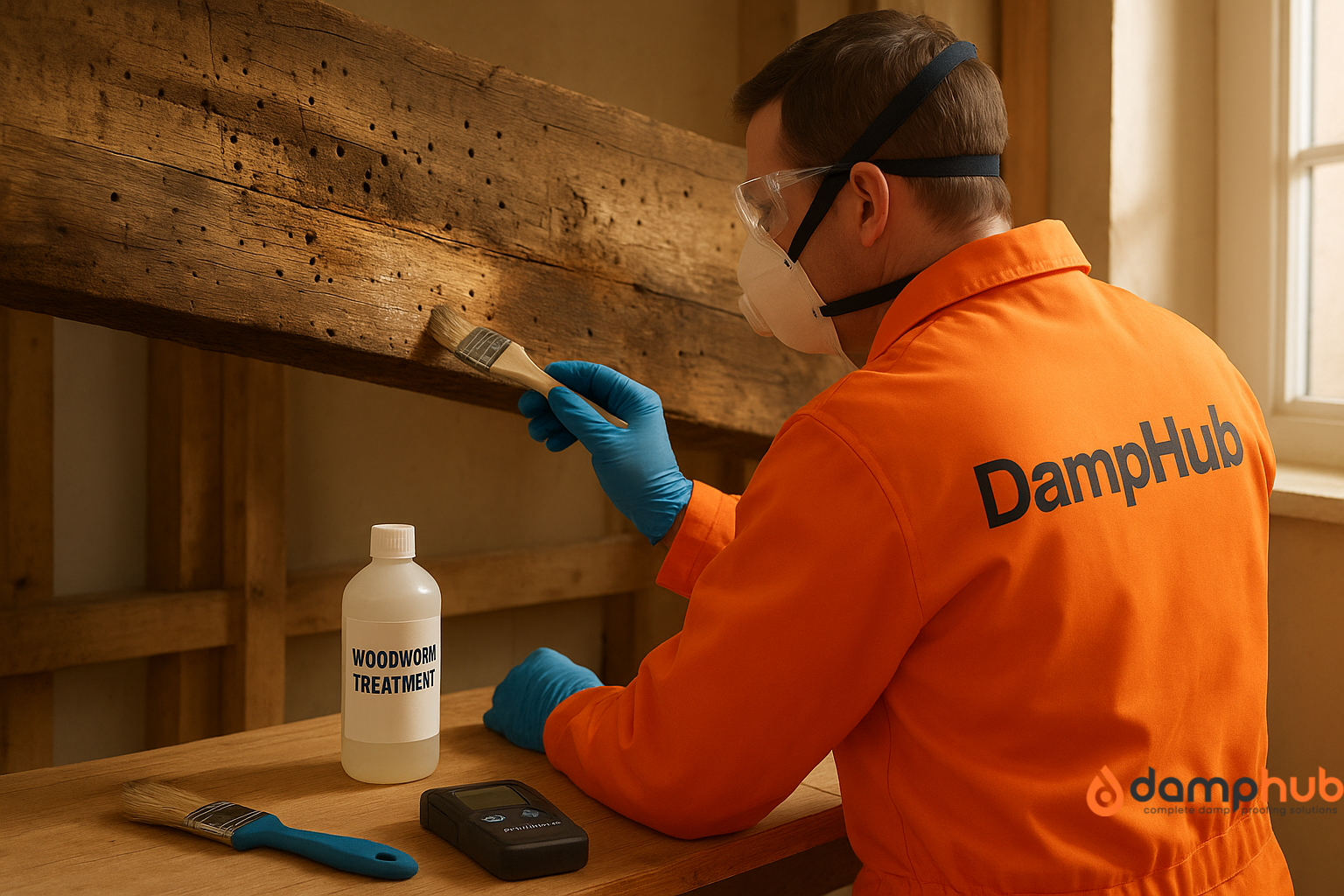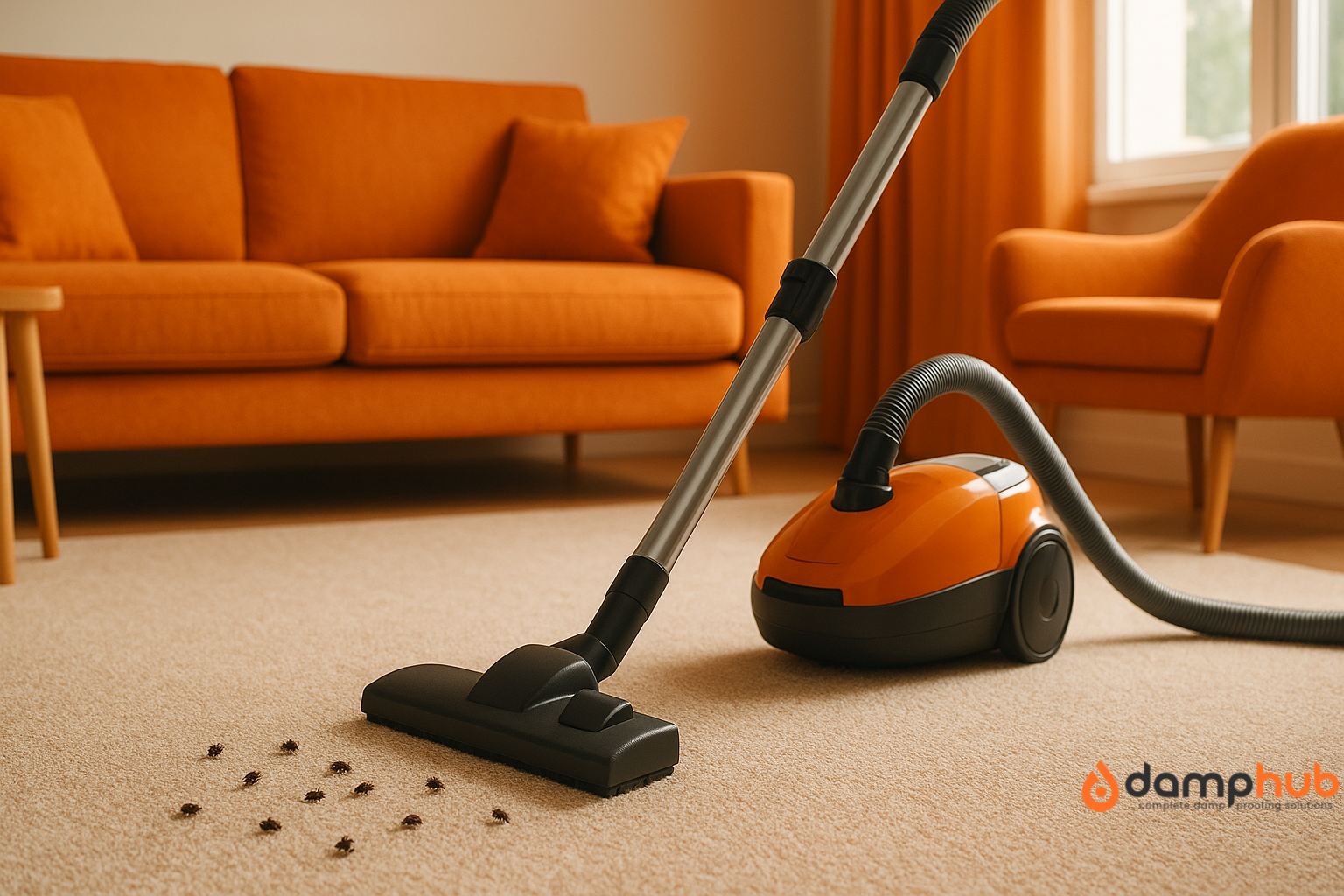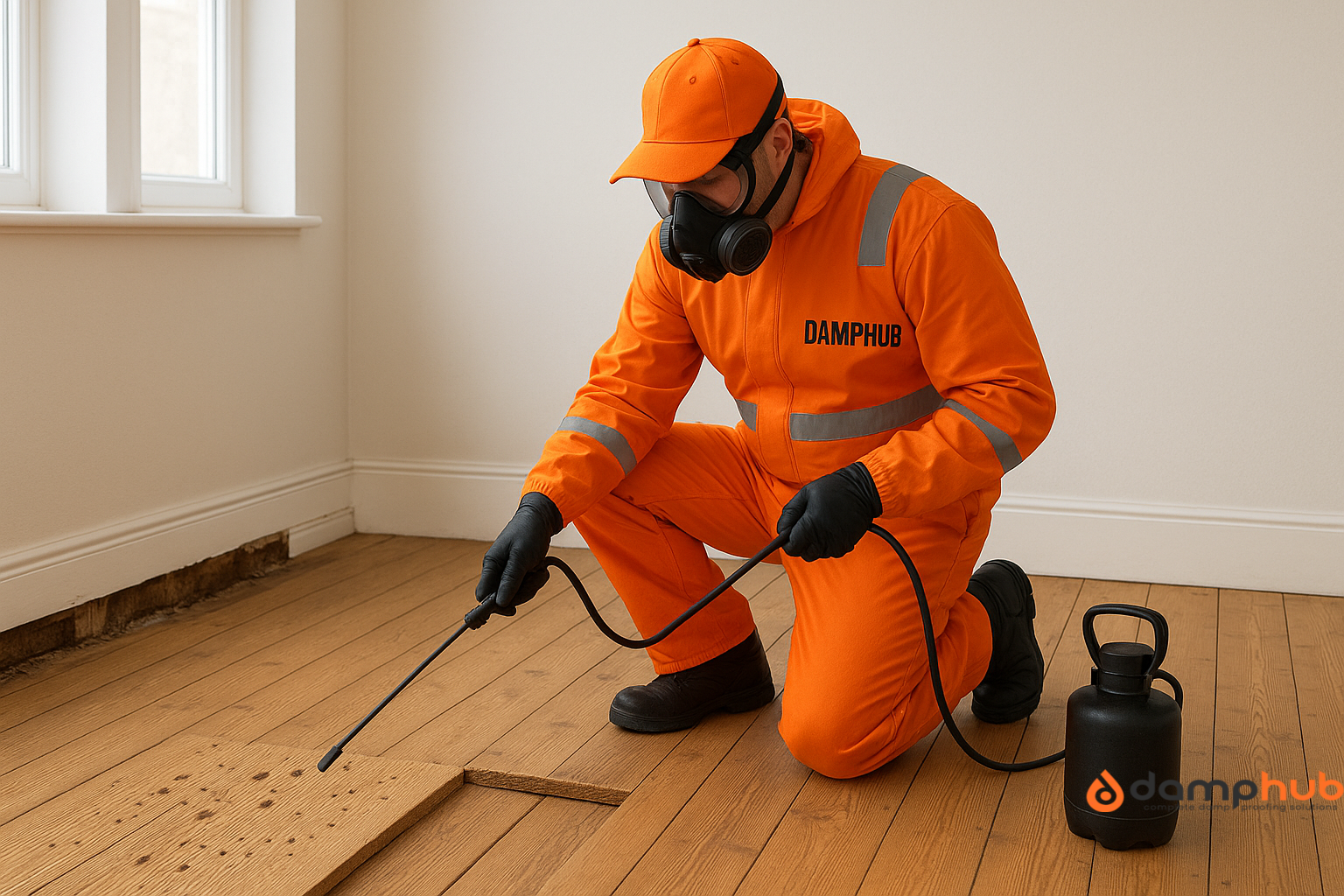
Carpet beetles are one of the most underestimated household pests in the UK. According to the British Pest Control Association, cases have risen steadily over the past decade, especially in centrally heated homes where warm conditions allow them to breed year-round. A single female can lay up to 100 eggs, and once the larvae hatch, they feed relentlessly on natural fibres like wool, cotton, and silk.
What makes them such a problem is not just the damage they cause, but how quietly they do it. Unlike moths, they don’t leave obvious signs until patches of carpet are threadbare or clothing is already ruined. By then, the infestation is usually well established.
The good news is that it’s possible to get rid of carpet beetles. If you’re not sure how, this carpet beetle removal guide will teach you:
- What carpet beetles are,
- How do they live?
- What attracts carpet bugs?
- how to spot them early, and most importantly
- How to get rid of carpet bugs and stop them from coming back using effective black carpet beetle control methods.
How to Get Rid of Carpet Beetles (4 Easy Steps in Video)
What Are Carpet Beetles?

Carpet beetles are tiny insects that belong to a family called Dermestidae.
They’re small—about the size of a sesame seed—and can be mistaken for other bugs because of their shape and colors.
Most adult beetles have round or oval bodies covered with little scales or hairs, which give them a speckled look.
Don’t let the name fool you—carpet beetles in UK homes don’t just live in carpets.
You can find them hiding in wardrobes, behind furniture, in air vents, under baseboards, or even among stored dry food.
They’re attracted to natural materials like wool, leather, feathers, and fur. The “carpet” in their name just points to one of their favorite snacks.
Most Common Types of Carpet Beetles UK
1. Varied Carpet Beetle (Anthrenus verbasci)
- Small with black, white, yellow, and brown scales in a mottled pattern
- Adults are often seen flying indoors during spring and summer
- Feeds on wool, silk, feathers, and sometimes even stored food

2. Furniture Carpet Beetle (Anthrenus flavipes)
- Slightly larger, with yellow scales and a white underbelly
- Especially fond of upholstery, furniture linings, and soft stuffed items

3. Black Carpet Beetle (Attagenus unicolour)
- Solid black, glossy, and smooth-bodied
- Often invades homes with pets or stored food supplies
- Targets animal-based materials and dry pantry items

Each species can do serious damage, so correctly identifying the type can help you choose the right carpet beetle treatment—and yes, sometimes more than one type will show up in the same house.
Why Do Carpet Beetles Cause Damage?
Adult carpet bugs mostly feed on pollen and plants outdoors and don’t harm your belongings.
The real problem is their larvae.
These fuzzy little larvae feed on natural animal fibres like wool, leather, silk, fur, feathers, and even pet hair because they need protein (keratin) to grow.
As the beetle bugs feed, they cause damage that worsens over time, affecting clothes, carpets, furniture, and treasured items.
👉 Related Blog: What Does Woodworm Look Like?
What Damages Do Carpet Beetles Cause in UK Homes?
If you don’t get rid of carpet beetles, the damage caused by their larvae can be surprisingly destructive around the house.
- Holes in natural fabrics: Carpet bugs larvae feed on wool, silk, leather, and other animal fibres, creating holes
- Bald patches in carpets: feeding causes worn or bare spots in wool carpets
- Damage to stored items: blankets, cushions, and clothes suffer from chewing without easy detection
- Allergic reactions: The carpet bugs shed hair and skin, causing itching and rashes. Breathing in these particles irritates the lungs and triggers coughing or sneezing
- Contamination of areas: droppings and shed skins leave dirt and debris behind

Recognising these signs early helps you manage a carpet beetle infestation before it spreads.
What Attracts Carpet Beetles to Your Home?
Carpet beetles don’t just appear out of nowhere—they come looking for specific things.
Here’s what might be attracting carpet beetles into UK homes:
- Natural fibres: wool rugs, feather pillows, silk clothing, fur trims, and leather items are a buffet for carpet bug larvae
- Dust and debris: even if you don’t own many natural fabrics, dust that builds up in corners and vents can contain pet hair, dead skin cells, and crumbs—all of which attract larvae
- Stored food: Some carpet bug species will feast on dry food items like cereals, flour, grains, and pet food
- Pet areas: pet beds and areas with lots of shedding or dander are hotspots
- Dark, undisturbed places: beetles love hiding in places that rarely get touched—under furniture, behind curtains, in air ducts, or under floorboards
Understanding what they’re after makes it easier to get rid of carpet beetles with effective carpet beetle removal techniques.
Life Cycle of Carpet Beetles Explained
Video of the Life cycle of carpet beetles, from eggs to adults
To get rid of carpet beetles, it helps to know how they grow. Like most insects, they go through four main stages: egg, larva, pupa, and adult.
- Egg: Females lay dozens of tiny, white or cream-coloured eggs in dark corners near food sources. These hatch in about 1–2 weeks.
- Larva: This stage causes the most damage. The larvae are tan or brown, fuzzy, and caterpillar-like. They feed for weeks—or even months—depending on the environment.
- Pupa: After feeding, the larva enters a cocoon-like stage while it transforms into an adult beetle.
- Adult: Adults don’t usually feed on fabrics. They just mate, lay eggs, and often fly toward windows, attracted by light.
You’ll need different strategies for different life stages—especially if you want to stop the next generation from hatching and maintain effective carpet beetle control in UK homes.

Signs of a Carpet Beetle Infestation
Infestations often creep in silently, but there are signs you can look out for:
- Fabric damage: These carpet bugs are responsible for the irregular holes, worn patches, or bald spots on clothes, carpets, and cushions—especially those made from wool or feathers
- Larvae or shed skins: You might spot tiny, hairy larvae or find the old skins they’ve shed in closets, drawers, or along baseboards
- Adult beetles: small beetles crawling on windowsills, light fixtures, or near vents—especially in spring and summer
- Droppings: The carpet bug larvae leave behind dark, gritty waste that looks like sand or pepper flakes
- Musty smell: In serious infestations, you might notice a faint, stale smell caused by larvae’ droppings and skins

Where to Look for Carpet Beetles
- Behind and under furniture
- Inside wardrobes and drawers
- In air vents and ducts
- Around skirting boards and floor cracks
- Under rugs or carpets
- Pet bedding and soft toys
- Attics, basements, and storage boxes
Look closely—larvae especially love dark, quiet spaces, making these hotspots common in UK homes affected by carpet beetles.
👉 Related Blog: How to Identify and Get Rid of Black Carpet Beetles
Identifying Characteristics of Carpet Beetle Larvae and Eggs
Knowing what to look for makes a big difference:
- Carpet bug larvae: tan or light brown, fuzzy, and about 4–8 mm long. They look like hairy caterpillars
- Eggs: cream-coloured, tiny (less than 1 mm), and usually laid in clusters. Found in crevices, fabric folds, or the backs of furniture
Spotting these early gives you a fighting chance to stop an infestation before it spreads.

Which UK Homes Are Prone to Carpet Beetle Infestation?
While any home can get carpet bug beetles, some are more vulnerable than others:
- Older properties: homes with original wooden flooring, fireplaces, or old insulation offer many hiding spots
- Homes with pets: pet hair and dander are magnets for carpet bug larvae
- Houses with lots of natural materials: if your home is filled with wool rugs, feather-filled duvets, or vintage furniture, beetles will find it appealing
- Loft spaces and bird nests: Carpet bugs often enter through chimneys or attics that host bird nests or dead insects
- Flats with shared walls or vents: infestations can spread from neighbouring units in apartment blocks
Knowing your risk helps you stay one step ahead with carpet bug prevention UK.
How to Get Rid of Carpet Bugs Naturally
A. Natural Repellents and Essential Oils
Certain oils can repel beetles and larvae. Try:
- Lavender
- Eucalyptus
- Peppermint
- Clove
How to Use:
Mix 10–15 drops in 200 ml of water. Spray on wardrobe interiors, skirting boards, and upholstery edges.
Reapply every few days.
You can also soak cotton balls in essential oils and tuck them into drawers or storage boxes.
Herbal sachets (using dried lavender, cedar chips, or bay leaves) are also effective.
B. Household Cleaning Remedies
- White Vinegar: Wipe down shelves, drawers, and corners with vinegar. It will get rid of carpet bug larvae and eggs on contact.
- Steam Cleaning: High temperatures destroy larvae deep in carpets or upholstery.
👉 Read more from us: How to Treat Carpet Beetle Rash
C. Sticky Traps
Pheromone traps catch adult beetles, helping you monitor your progress.
Place them near windows or in affected rooms.
How To Get Rid of Black Carpet Beetle – Cleaning & Physical Control
A. Vacuuming Strategy
Daily vacuuming is essential—focus on:
- Carpet edges
- Floorboard gaps
- Furniture seams
- Vents and radiators
- Wardrobes and closet corners
Use a vacuum with a HEPA filter to trap allergens and larval hairs.
Empty the vacuum outside immediately.
B. Washing and Heat-Treating
Wash clothes and bedding at 60°C or higher.
For delicate fabrics, seal them in plastic bags and freeze at –18°C for 72 hours to kill all life stages.
C. Quarantine Strategy
Remove contaminated items and seal them in bags.
Don’t move infested things between rooms—you’ll just spread the problem.

How To Get Rid of Carpet Beetles Permanently – Chemical Methods
A. Types of Insecticides
- Residual Sprays: linger on surfaces and kill over time—many are permethrin-based
- Dusting Powders: great for cracks and edges
- Foggers/Bug Bombs: not ideal in homes with pets or kids, but effective for large rooms
UK-Approved Brands:
If you’re unsure which one to choose or just want a clear, side-by-side look at the top options, have a look at our full guide: 10 Best Carpet Beetle Sprays to Buy in the UK.
B. How to Use Safely
- Always read labels
- Wear gloves and a mask
- Remove pets and ventilate the room after use
- Treat baseboards, carpets, and inside furniture
- Reapply in 10–14 days to kill new hatchlings
When to Call a Professional Pest Controller
If you tried all the above and are still wondering how to get rid of black carpet beetles, don’t keep guessing—get expert help if:
- You see dozens of beetles regularly
- There’s damage across multiple rooms
- You’re reacting to allergens from larval hairs
- The source is hard to find or in tricky areas like attics
- You’ve tried to get rid of carpet beetles naturally, but they keep coming back
Professionals use targeted treatments and have tools to reach deep hiding spots.

How to Prevent Future Carpet Beetle Infestations
A. Good Housekeeping
- Vacuum regularly, especially in hidden areas
- Store off-season clothes in airtight containers
- Use moth-proof bags or cedar-lined chests for woollens
- Keep the pantry sealed and tidy to avoid attracting stored product pests
B. Regular Inspections
Check vulnerable areas every few months—closets, under furniture, vents, and pet bedding.
C. Environmental Control
Reduce humidity with dehumidifiers and keep rooms well-ventilated. Carpet beetles thrive in moist conditions.
If you follow these tips, you can beat carpet beetles for good and keep your home safe from damage.
Want to know more? 👉 What Is a Varied Carpet Beetle?
Book a Damp Survey with DampHub Today
Don’t let damp damage spiral out of control. A professional damp survey can give you clarity, peace of mind, and a clear path forward.
At DampHub, our local specialists across the UK are here to help you identify the cause, assess the severity, and recommend the right solution to get rid of carpet beetles—no pushy sales, just honest guidance.
Get in touch with DampHub today to book your expert damp survey anywhere in the UK.
Frequently Asked Questions About Carpet Beetles
Should I worry about carpet beetles?
Yes, carpet bugs can cause serious damage to natural materials like wool, silk, leather, and even feathers.
If left untreated, they can ruin carpets, furniture, and clothing. Early action helps prevent long-term damage and recurring infestations.
What is the difference between a bed bug and a carpet bug?
Bed bugs are parasitic and feed on human blood, often causing itchy bites.
Carpet beetles, on the other hand, feed on natural fibres and do not bite humans.
The damage from carpet beetles usually appears on clothing and fabric rather than on the skin.
Can carpet beetles bite?
No, adult carpet bugs do not bite.
However, their larvae can cause allergic reactions or skin irritation in some people due to the tiny hairs on their bodies.
These reactions may resemble insect bites but are not caused by actual biting. More guide: How to Prevent Carpet Beetle Bites?
How do I know if it’s a carpet bug?
Signs include small, round beetles or fuzzy larvae crawling on surfaces, shed skins, and holes in natural fabrics.
You may also notice adult beetles near windows, trying to get outside or attracted to light.
How to find the source of carpet beetles?
Inspect hidden and undisturbed areas like behind furniture, under carpets, in wardrobes, and inside air ducts.
Carpet beetles are drawn to lint, pet hair, and food debris, so focus on spots where these might collect.
What is the fastest way to get rid of carpet beetles?
Deep clean your home by vacuuming carpets, furniture, and cracks.
Wash affected fabrics in hot water, and use insecticidal sprays designed for beetles.
For severe cases, a professional pest control service may be necessary to eliminate the infestation.
What time of day are carpet beetles most active?
Carpet bugs are most active during daylight hours, often found near windows or lights.
Their larvae, which do the actual damage, are less visible and prefer dark, quiet spaces.
What can be mistaken for carpet beetles?
Ladybugs are the most common look-alike of carpet bugs.
They’re similar in shape and size but usually red or orange with spots.
Other insects like clothes moths, flour beetles, or varied carpet beetles may also be confused with them due to overlapping habitats or colours.






